
Gal Sofer
MD. Ph.D. My research focuses on demonic magic from the late middle ages to the modern period, focusing on Solomonic magic and its reception. Currently, I am pursuing research on Kabbalah and magic in Renaissance Italy.
Senior lecturer in the Department of Arts at Ben-Gurion University of the Negev.
Adjunct lecturer in the Department of Nursing at Ben-Gurion University of the Negev, teaching cardiovascular physiology and pathophysiology.
Teaching general surgery, neurology, and endocrinology for the government licensure exam for nurses.
Intern at Soroka Medical Center (2021-2022).
Supervisors: Prof. Boaz Huss and Prof. Yuval Harari
Address: Israel
Senior lecturer in the Department of Arts at Ben-Gurion University of the Negev.
Adjunct lecturer in the Department of Nursing at Ben-Gurion University of the Negev, teaching cardiovascular physiology and pathophysiology.
Teaching general surgery, neurology, and endocrinology for the government licensure exam for nurses.
Intern at Soroka Medical Center (2021-2022).
Supervisors: Prof. Boaz Huss and Prof. Yuval Harari
Address: Israel
less
Related Authors
Violeta Riechman
Ben Gurion University of the Negev
Sara Offenberg
Ben Gurion University of the Negev
Avishai Bar-Asher
The Hebrew University of Jerusalem
Gad Freudenthal
Centre National de la Recherche Scientifique / French National Centre for Scientific Research
Moshe Florentin
Tel Aviv University
Neriah Klein
The Hebrew University of Jerusalem
Malachi Beit-Arié
The Hebrew University of Jerusalem
Dov Cohen
Bar-Ilan University
Menachem Katz
The Open University of Israel
Albert Hembd
Bar-Ilan University
InterestsView All (31)
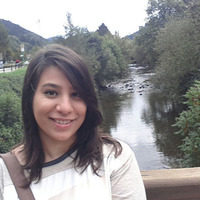
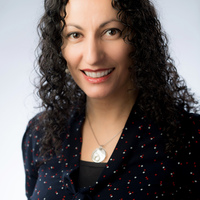



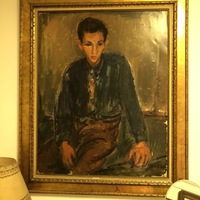
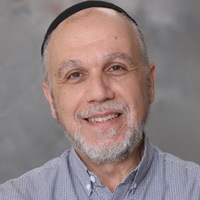
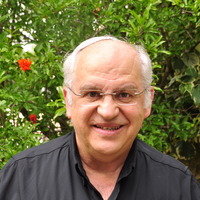

Uploads
Papers by Gal Sofer
This paper analyses a micrography in a 1304 Ashkenazi Hebrew biblical manuscript housed at the Bibliothèque Nationale de France (BnF), depicting four figures holding an object. The manuscript’s noteworthy feature is that it is entirely adorned with micrography, and the text and images are intricately intertwined. Thus, any attempt to understand the Masoretic text necessitates an examination of the micrography decoration. While previous research has primarily focused on cataloguing and describing the manuscript, little has been done to explore its artistic and textual design. Therefore, this paper aims to fill this gap by delving into the significance of the iconography of these four figures, and discussing the possible meaning of this decorative element for the manuscript’s patron. We argue that these figures are associated with the practice of catoptromancy, which was prevalent among Jews and Christians during the Middle Ages. This micrography serves as a visual critique of the false prophets and magicians discussed in the book of Jeremiah.
גל סופר ושרה אופנברג, "'וְאַתֶּם אַל תִּשְׁמְעוּ אֶל נְבִיאֵיכֶם וְאֶל קֹסְמֵיכֶם': שרי ביצה וכוס בכ"י הספרייה הלאומית בפריז 9", מדעי היהדות 59 (2024), עמ' 20-1.
This article describes this manuscript and discusses certain kabbalistic and magical themes in it. The purpose of this discussion is to shed new light on the figure of Alemanno, while emphasizing his aspirations to lead the Jewish nation, like Moses, and to bring about the redemption. Furthermore, I argue that Paris MS 849 is a literary autobiography, in which the author used the literary frame of Dante’s La Divina Commedia, and that this untitled manuscript might have a name.
The recipe's title, its sympathetic magic characteristics and the magical adjuration mentioned in are instructive in regard to its affinity with the corpus Clavicula Salomonis from medieval Europe. In addition, we can also point out a similar recipe that has been found in that corpus.
This magic recipe from the Genizah can serve as an example to a mixing of Jewish Christian and Muslim traditions in the framework of magical practice.
Conference Presentations by Gal Sofer
However, an examination of unpublished Hebrew and Aramaic texts, as well as already known Latin, Italian, English, and Greek texts, suggests otherwise.
presented at 'Magic and Language – Jewish and Christian Magic in Early Modern Europe' (2019), University of Leipzig, Germany.
This paper analyses a micrography in a 1304 Ashkenazi Hebrew biblical manuscript housed at the Bibliothèque Nationale de France (BnF), depicting four figures holding an object. The manuscript’s noteworthy feature is that it is entirely adorned with micrography, and the text and images are intricately intertwined. Thus, any attempt to understand the Masoretic text necessitates an examination of the micrography decoration. While previous research has primarily focused on cataloguing and describing the manuscript, little has been done to explore its artistic and textual design. Therefore, this paper aims to fill this gap by delving into the significance of the iconography of these four figures, and discussing the possible meaning of this decorative element for the manuscript’s patron. We argue that these figures are associated with the practice of catoptromancy, which was prevalent among Jews and Christians during the Middle Ages. This micrography serves as a visual critique of the false prophets and magicians discussed in the book of Jeremiah.
גל סופר ושרה אופנברג, "'וְאַתֶּם אַל תִּשְׁמְעוּ אֶל נְבִיאֵיכֶם וְאֶל קֹסְמֵיכֶם': שרי ביצה וכוס בכ"י הספרייה הלאומית בפריז 9", מדעי היהדות 59 (2024), עמ' 20-1.
This article describes this manuscript and discusses certain kabbalistic and magical themes in it. The purpose of this discussion is to shed new light on the figure of Alemanno, while emphasizing his aspirations to lead the Jewish nation, like Moses, and to bring about the redemption. Furthermore, I argue that Paris MS 849 is a literary autobiography, in which the author used the literary frame of Dante’s La Divina Commedia, and that this untitled manuscript might have a name.
The recipe's title, its sympathetic magic characteristics and the magical adjuration mentioned in are instructive in regard to its affinity with the corpus Clavicula Salomonis from medieval Europe. In addition, we can also point out a similar recipe that has been found in that corpus.
This magic recipe from the Genizah can serve as an example to a mixing of Jewish Christian and Muslim traditions in the framework of magical practice.
However, an examination of unpublished Hebrew and Aramaic texts, as well as already known Latin, Italian, English, and Greek texts, suggests otherwise.
presented at 'Magic and Language – Jewish and Christian Magic in Early Modern Europe' (2019), University of Leipzig, Germany.
This presentation aims to explore the reception of ritual magic by Alma and Max Théon, as well as other members of the H.B. of L., in order to understand how those figures played a significant role in the revival of ritual magic, and how their interpretation of magic has influenced practitioners in the twentieth century and beyond.
https://www.youtube.com/watch?v=aHscA2hGtEE
כתבי יד משמשים כמקור ראשוני לחקר ההיסטוריה במשך שנים רבות. חוקרות.ים שונים ניגשים לעיסוק בכתבי יד דרך דיסציפלינות שונות, במסגרתן נבחנים היבטים שונים שלהם (טקסטואליים, חזותיים, חומריים ואחרים). משום שאובייקטים אלו משמשים כציר מרכזי של מחקרים מסוגים שונים, בהקשרים תרבותיים וחברתיים שונים, פלטפורמה המפגישה בין חוקרות.ים אלו עשויה לתרום לקידום המחקר הבין-תחומי, להוביל לשיתופי פעולה מעניינים, ולקדם את חקר כתבי היד בארץ. "אות: הפורום הישראלי לחקר כתבי יד" מבקש להיות הפלטפורמה הזו, מקום המפגש של חוקרות.ים בשלבים שונים של הקריירה שלהם.ן המעוניינים.ות לקחת חלק בפעילות מהסוג הזה. הפורום עתיד לקיים ארבעה מפגשים בשנה, במהלכם יציגו משתתפות ומשתתפי הפורום ממחקריהם.ן. כמו כן, הפורום ינהל מאגר ידע בנוגע לחקר כתבי יד, ויקיים הכשרות בנושא. תחת "חקר כתבי יד" נמנים מחקרים מסוגים שונים, כאמור, ללא שום מגבלת תקופה, שפה או מרחב גיאוגרפי, ובתנאי שהאובייקט המרכזי הוא כתב היד. בין מחקרים אלו נמנים, בין היתר, מחקרים בפליאוגרפיה, קודיקולוגיה, אוספים ואספנות, היסטוריה, תרבות חזותית ועוד.
https://docs.google.com/forms/d/e/1FAIpQLSewzlylJBsEnRU2qcj5vxoBE4vv_9a2U2upC0850pLpbgHPcA/viewform